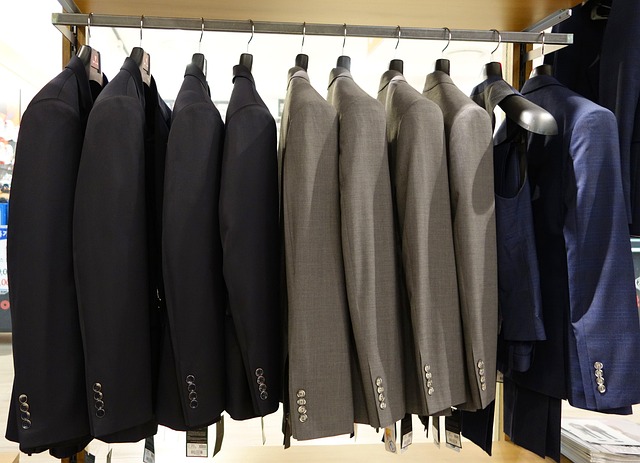By Amber Hovious, VP of Marketing and Partnerships, Teamwork Commerce
The rapid rise of e-commerce and omnichannel shopping has transformed the shopping experience, proving more convenient and offering choice. However, now we are experiencing a shift where retailers are returning to physical stores, with some online-only brands opening brick-and-mortar locations for the first time. Brands that initially started with an online presence are increasingly investing in brick-and-mortar stores, recognising the importance and value of in-person experiences and human connection.
The role of the store is evolving, not disappearing. Retailers and established brands are embracing physical stores to offer customers immersive and memorable experiences that purely digital platforms often struggle to replicate. Physical stores foster customer loyalty, strengthen brand reputation and cater to today’s consumer needs for authentic, human-to-human interactions.
However, to thrive and promote business growth, retailers must embrace innovation. Balancing the return to physical retail and the development of new technologies to enhance customer experience and drive operational efficiency for long-term success.
In this article, Amber Hovious, VP of Marketing and Partnerships at Teamwork Commerce, will explore how retailers can successfully integrate new concepts whilst benefiting from the return to physical retail. She can discuss:
Why physical spaces still matter
Despite the accelerated shift to e-commerce, the physical store remains a cornerstone of retail strategy. Physical environments create a sensory and emotional connection that digital interfaces cannot replicate – a place where shoppers can feel, touch, and experience products in context. Importantly, physical stores can foster human connection – the kind that builds loyalty and trust in a way that algorithms alone cannot.
Retailers must focus on reimagining what their stores can become: a brand experience centre, a fulfilment hub, and a data-rich engagement point all at once. Hybrid models such as Buy Online, Pick Up In Store (BOPIS) and Buy Online, Return In Store (BORIS) bridge the convenience of digital with the immediacy of in-person service. These models are operationally efficient as well as consumer engagement drivers, offering choice, flexibility, and instant gratification – factors that drive consumer loyalty.
New retail technologies are becoming a game-changer
Implementing new technologies into physical stores drives consumer engagement and delivers more personalised, engaging shopping journeys. Technology-driven shopping experiences and pop-up retail are becoming powerful tools to test and learn what stimulates consumer interest.
From AI-driven personalisation engines to augmented reality (AR) try-ons and cashierless checkout systems, innovative tools are changing the way consumers interact with retailers. Computer vision, RFID tagging, and IoT-powered analytics allow brands to understand shopper behaviour in real time and adjust layouts, promotions, and inventory dynamically.
Pop-up retail formats, powered by modular store technology and mobile POS, are becoming increasingly popular. Brands can pilot new experiences, analyse performance, and scale what works – without the overhead of permanent footprints. Retailers should translate technological investment into frictionless, high-value experiences that make shopping feel personal, effortless, and rewarding.
Blending innovation with tradition
The future of retail is not a choice between digital and physical, but the intelligent integration of both. It’s important to combine both new innovative methods with traditional concepts in physical stores to maximise sales and drive growth. Brands should combine legacy retail strengths such as human service, sensory experience, and brand storytelling with digital insights and omnichannel agility.
Retailers who can maintain this balance will not only increase conversions but also create a unified customer journey across touchpoints. Predictive analytics can inform product placement and staffing decisions; mobile engagement tools can extend relationships beyond the store visit. All this also helps brands use data to make highly informed decisions.
Tech-enhanced store formats
More retailers are returning to physical retail, making it crucial to explore the most effective ways to attract and retain consumers. One of the key drivers of advanced physical stores isn’t intuition, it’s intelligence. Data-driven layouts, guided by heat maps and behavioural analytics, are optimising traffic flow and dwell time. RFID-enabled fitting rooms and smart mirrors create seamless product discovery while providing retailers with instant feedback on preferences and stock movement.
Meanwhile, advanced mobile POS systems can empower associates to serve customers and complete transactions from anywhere in a store, allowing them to access customer profiles, order history, and inventory in real time. As a result, staff can tailor customer interactions more efficiently with all the data at their fingertips.
As more retailers return to physical retail to strengthen brand visibility and customer trust, the emphasis must shift from transactions to transformation. Retailers shouldn’t use tech to replace humans but deploy it as a strategic enabler of human-centric experiences. This can help them make consumers feel recognised, valued, and inspired to return.
In the new retail landscape, the measure of success is no longer footfall or click-through rates – it’s engagement, trust, and loyalty. Retailers who cater to these values will stand out in the near future.
 Amber Hovious, is the VP of marketing & Partnerships at Teamwork Commerce. Amber has been part of the Teamwork Commerce family for 7 years, building out the marketing strategy, business growth and approach as well as cultivating a wide array of partnership relationships to drive long-term success.
Amber Hovious, is the VP of marketing & Partnerships at Teamwork Commerce. Amber has been part of the Teamwork Commerce family for 7 years, building out the marketing strategy, business growth and approach as well as cultivating a wide array of partnership relationships to drive long-term success.
Related Articles

Hexnode CEO on how the “Holiday Illusion” is Masking the Risks of Retail’s Seasonal Workforce
The danger of seasonal hires is magnified not just by who is accessing the network, but when they are doing it. Sophisticated threat actors possess a deep understanding of the retail operational calendar.

The New Frugality: How Inflation and Tariffs Are Reshaping Consumer Spending
One of the most telling shifts is how shoppers approach decision-making. Where convenience once dominated, consciousness now plays a larger role. People are researching more before making a purchase, comparing prices across multiple platforms, and questioning whether they really need the product in the first place.
Enartis to Acquire Parsec in Winemaking and Retail Deal
The deal will bring Enartis and Parsec together to help wineries manage every part of production more easily and efficiently, from grape to bottle.

A Practical Guide to Retail AI Use Policies for Retailers and HQ Teams
AI can bring new opportunities for retailers, but this innovation must come with responsibility.


 for the latest news and job opportunities in retail tech
for the latest news and job opportunities in retail tech 